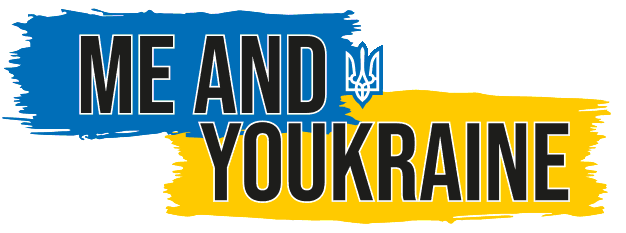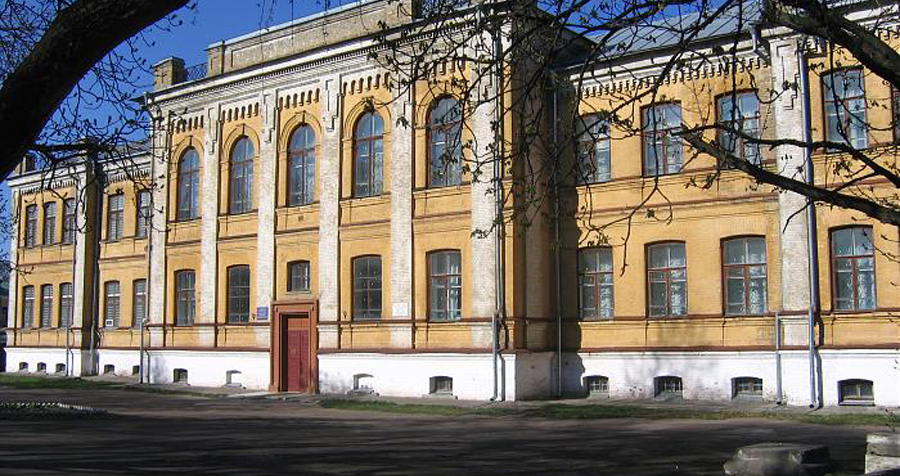
National Preserve ‘Chernihiv Ancient’
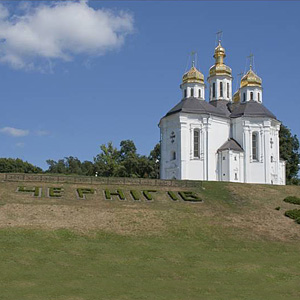
Chernihiv Ancient is the National Architecture-Historical Sanctuary located in the north-eastern Ukrainian city of Chernihiv. It was created at first as an affiliate of the National Sanctuary ‘Sophia of Kiev’. Since August 1, 1967 the site is a separate entity consisting of 34 monuments of architecture. Six sacral monuments had been built in the 18th century and thus belong to the oldest ones in Eastern Europe.
Some of them are still functioning temples and monasteries (Our Savior and Transfiguration Cathedral, the Church of St. Parasceva Pyatnytsa, St. Uspenskyy (Dormition) Eletskii monastery and Holy Trinity and Elias Monastery Cathedral). Others are museums. Borys and Glib Cathedral exhibits three thematic expositions: ‘The Cathedral – an architectural monument of XII century’, ‘Architecture and the ancient craft of Chernigov’ and ‘Religious Antiquities of the 18th and 19th century’.
Three halls on the Collegiums premises (early 18th century) house the permanent exhibition ‘The Art of Chernihiv in the 18th and 19th century’. Each room is dedicated to specific iconography: professional, old believers and folk. Als very interesting are the Saint Anthony Caves and the Saint Elias Church. Since 1989, the site is placed on the tentative list of the United Nations Educational, Scientific and Cultural Organization (UNESCO) as part of World Heritage. A few examples of architectural monuments are:
- Detynets of Chernihiv, also known as Chernihiv’s motte (earthwork)
- Saviour-Transfiguration Cathedral
- Chernihiv’s Collegium (see collegium)
- House of Lyzohub (Colonel of the Chernihiv’s Regiment)
- House of Archbishop
- Governor’s House
- Beautiful Square
- Church of Preparatory Friday
- Cathrine Church
- Yelets-Dormition Monastery
- Trinity-Ilna Monastery with Antonie Caves
- Black Grave (kurgan)
(Sources: en.wikipedia.org, siver.org.ua)
1 Preobrazhenska Street
Tel. number: +38 0462 27 01 45
Guide tel.: +38 0462 64 59 64
oldcher@gmail.com
naiz3.ucoz.com
Opening hours: 10.00 – 18.00, daily
Historical Museum of Vasily Tarnovsky
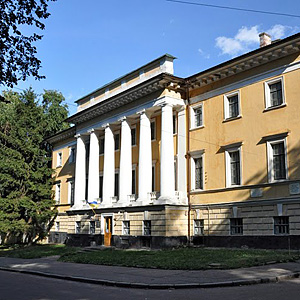
The historical exposition and museum administration is located in the former building of the Governor. It is an architectural monument (early 19th century) located on the territory of the Chernihiv Detynets (Rampart). The exhibition is set in 16 halls and represents different periods of Chernigiv’s history, from ancient until modern times. There is a rich collection of archeological finds, old books, rare documents and articles of the Cossack epoch.
Very popular among the visitors is diorama ‘Mezin site’ which gives an idea of the life of prehistoric man in the late Paleolithic period. The settlement discovered on the Desna river near the village of Mezin has become known worldwide because of the unique works of primitive art found there. Among them are bracelets, stylized figurines decorated with carved meander tracery (oldest in the world), mammoth bones painted with ocher and other products.
The archaeological section draws attention with its collection of crosses -encolpions, ancient jewelry and ornaments, weapons of the 10th and 11th century, the treasure of ancient hryvnia of Chernihiv type (10th century), seals, whorls and amphorae with graffiti, as well as finds from the Viking settlement in Shestovitsa village – the largest in Ukraine. Interesting exhibits are the genuine arming of a Russian warrior.
Exceptionally valuable is the collection of Ukrainian historical artifacts from the 12th to the 19th centuries, collected by Vasiliy Tarnovsky. It includes weapons, military equipment, household and cult items associated with Ivan Mazepa, Semen Paliy, Pavlo Polubotok, Vasiliy Dunin-Borkovsky and many others. The museum possesses family archives of famous Cossack families, 156 Hetman’s ordinances, a collection of Cyrillic incunabula (including 2 copies of the Ostrog Bible, 53 Gospels in precious covers, made by jewelers in Ukraine, Russia and Western Europe). There are samples of weapons and a Cossack outfit of that time. A unique exhibit is the frame of icon case of Chernihiv ‘Icon of the Mother of God Elias’. The frame consists of 18 individual ornamented silver plates. This unique jewelry masterpiece was created in 1695 by order and means of Hetman Ivan Mazepa.
The museum also has a hall devoted to the events of the end of 17th – beginning of 18th century. That was the period when Russia fought for access to the Black and Baltic seas. Chernihiv Cossack regiments took active part in those campaignes of Peter I. The ethnographic collection is interesting by examples of traditional folk art (embroidery, weaving, costumes, pottery, woodcarving) and beadwork embroidery, dated to the 17th and 18th century. The collection of musical instruments is one of the largest collections, which historical museums can boast in Ukraine. A separate exposition tells about the history of the city from the 7th until the start of the 20th century.
4 Gorkovo Street
Guide tel.: +38 0462 69 99 30
museumtarn@cg.ukrtel.net
choim.org
Opening hours: Daily 09.00 – 16.30, except Thursdays
Saturday and Sunday: 10:00 – 17:30 (during summer)
Chernihiv Art Museum H. Halahan
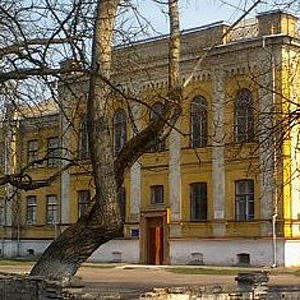
Chernihiv Regional Art Museum is one of the youngest in the Ukraine. It opened its doors to visitors in 1984. The basis of the museum’s collection, its pride and ornament is composed of the collection of the Galagans family, which consists of works from West European, Ukrainian and Russian art of the 17th – the beginning of the 20th centuries, folk paintings and in particular the famous Cossacks Mamais, the portraits of eight generations of this famous Cossack and sergeant major kin and their famous relatives – the Razumovskies, the Daragans, the Markeviches and Lamsdorfs, which numbers about 100 works.
To date, the main museum funds comprise almost 8,5 thousand pieces of fine and decorative art starting from the 16th century. A special place in the museum’s exposition is alloted for icon-painting works, mostly Ukrainian, among which there are the canonical ‘Archangel Michael’, a collection of Deiparous icons and peculiar folk icons which originally interpret the image of the patron saint.
The collection of works by well-known Ukrainian and Russian academic artists is quite significant. Among them is ‘Girls are foretelling their marriage with the help of garlands’ by I.Sokolov, ‘Gothic bridge in Sokyryntsi park’ by A. Voloskov, ‘Autumn plowing in Malorossia’ by M. Klodt, ‘Storm on the Sea’ by I. Aivazovsky and many others.
The section of Western European art is rather small but very interesting. The works of the Italian school of the 18th century is represented by the picture ‘Raising of Cupid by Venus and Mercury’ by Jacob Ross and ‘The Coronation’ by Michele Schiavone. Dutch and Flemish painting is represented by the works of genre art and battle-scene painting such as ‘The military camp’ by Bloom P. Van Standard, ‘In the Tavern’ by F. Shveer and the variety of still life paintings and canvases on mythological and evangelic items. The real decoration of the section are works of Dutch and Flemish masters of the 17th-18th centuries: ‘Concert’ by Hendrick Jansz ter Brugghen, dated 1626, ‘Still life with strawberries’ by Theodore Caspar Smits, as well as the works of unknown artists.
French Art of the 18th and 19th century is represented by names of such famous painters as G. Robert (‘The ruins of old castle’), E. Meissonier (‘Admirer of pictures’), J. Trezer, E. Falconet, Francois Granet.
Considerably interesting are the bronze ebbs from the works of the greatest masters of French sculpture from the 18th and 19th century, like Felix Lecomte (‘Marie Antoinette’), Gustave Doré (‘Madonna with Child’), Francois Pomponius (‘Cosette’), as well as an animalistic sculpture by Pierre Jules Mena. (Source: siver.org.ua)
6 Gorky Street
Tel. number: +38 0462 64 70 06
Tel. guide: +38 0462 77 46 16
artmuseum1@mail.ru
halahan-art.com
Opening hours: 9.00 – 17.00, daily except Mondays
Military Museum
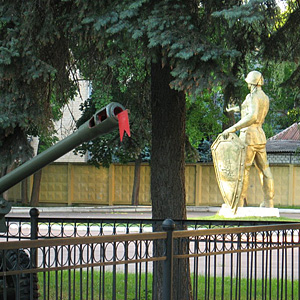
The expositions in this museum display Chernigiv during the Second World War.
55A T. Shevchenko Street
Tel. number : +38 0462 23 90 40
Opening hours:9.00 – 17.00, Wednesday – Sunday
Literary Museum of Kotsiubynsky
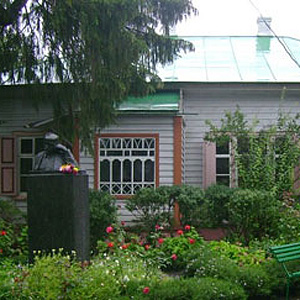
Mykhailo Mykhailovych Kotsiubynsky (September 17, 1864 – April 25, 1913) was a Ukrainian author whose writings described typical Ukrainian life at the start of the 20th century. Kotsiubynsky’s early stories were described as examples of ethnographic realism; in the years to come, with his style of writing becoming more and more sophisticated, he evolved into one of the most talented Ukrainian impressionist and modernist writers. The popularity of his novels later led to some of them being made into Soviet movies.
He moved to Chernihiv in 1898 and worked as a statistician at the statistics bureau of the Chernihiv ‘zemstvo’. He also was active in the Chernigov Governorate Scholarly Archival Commission and headed the Chernihiv Prosvita society from 1906 to 1908.
The house where he lived for the last 15 years of his life was turned into a museum in 1934; the Chernihiv Regional Literary-Memorial Museum of Mykhailo Kotsiubinsky. The house contains the author’s personal belongings. Adjacent to the house is a museum, which opened in 1983, containing Kotsiubinsky’s manuscripts, photos, magazines and family relics as well as information about other Ukrainian writers. (Source: en.wikipedia.org)
3 Kotsyubynsky Street
Tel. numbers:
+38 0462 4-04-59
+38 0462 4-10-03
+38 0462 4-43-26
kotsubinsky_museum@ukr.net
www.kotsubinsky.at.ua
Opening hours: 9.00 – 17.00, Saturday and Sunday 10:00 – 17:00
Archaeology Museum in Baturyn
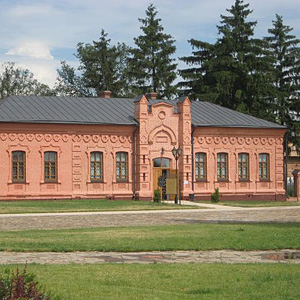
The exposition of the Museum of Archaeology Baturin is situated in the former Resurrection parish school, which was built in 1904. The exhibition covers the history from ancient times up to the tragic end of the city, in early November 1708. The museum has a collection of finds from Baturin and its surroundings, just over three hundred pieces.
The exposition is divided in three thematic areas: ‘Baturin ancient’, ‘Cossack Baturin days’ and ‘Baturin - Hetman residence’. The exhibition displays items from the Stone Age, the Mesolithic, Neolithic and Bronze Age, early Iron Age, the period of the Slavic cultures and from Kievan Rus. The most interesting are the fragments of molds. One of them shows what the buttons looked like many years ago. Also ancient jewelry made of different materials and various household items are displayed.
Exhibition ‘Baturin Cossack era’ is devoted to the Lithuanian-Polish and Cossack Baturin period of history and covers the period of the 14th century until 1669. Here are products of local artisans, Cossack derivatives and everyday things, copies of documents and maps of the time. All this comprehensively characterizes the history of Cossack Baturin period. A unique artifact is a silver-plated belt of a knight, a silver thaler from 1622, Cossack boots, insurgent weapons and other equally interesting items.
Exhibition ‘Baturin - Hetman residence’ is devoted to the bright Hetman period in the history of Baturin. From 1669 to 1708 Baturin was the residence of captains D. Mnohohrishnyi, Samoilovych II and Ivan Mazepa. It was the center of political, economic and cultural life of Hetman. Very few written sources of that time have survived. Because of urban development, planning, fortification and architecture of the capital, we learn almost exclusively from archaeological finds. An archeological team presented the findings of Trinity Cathedral; a grand place of worship from the Baroque period, and the first multi civilian building on the Left Bank Ukraine.
The Hetman's Capital at its peak was completely destroyed by the Russian army under the command of Alexander Menshikov 2 in (13) November 1708. It was a huge loss when the icon of the Virgin and Child on a copper plate (with traces of gilding masters of Kyiv-Pechersk Lavra) was burnt. Eloquent witnesses of this tragedy are a fragment of gun-mortars, standing on the walls of the fortress and a fragment of a church bell.
The grand opening of the Museum of Archaeology was held on January 22, 2009 by Viktor Yushchenko, the President of Ukraine at that time. This event was timed to celebrate the 300th anniversary of the 1708 defense of Baturin.
10, Street Guerrilla
Tel. number: +38 046 35 48 8 53
e-mail: b.arheology@ukr.net
BANDS AND SINGERS
Okean Elzy
Jamala
The Hardkiss
Tina Karol
Christina Solovy
Piccardysky Tertsiya
advertisement
Ruslana
Skryabin
Alyosha
Olexander Ponomarev
Zlata Ognevich
Onuka
advertisement
Antityla
Loboda
Irina Dumanskaya
Irina Fedishin
Vivienne Mort
Krykhitka Tsakhes
advertisement
S.K.A.Y.
Druha Rika
Boombox
Buv'ye
Lama
Platch Yeremy
advertisement
Voply Vidoplasova
T.N.M.K.
Tartak
Noomer 482
Braty Hadukyny
O. Torvald
advertisement
Bahroma
Epolets
Haidamaky
TIK
Ani Lorak
